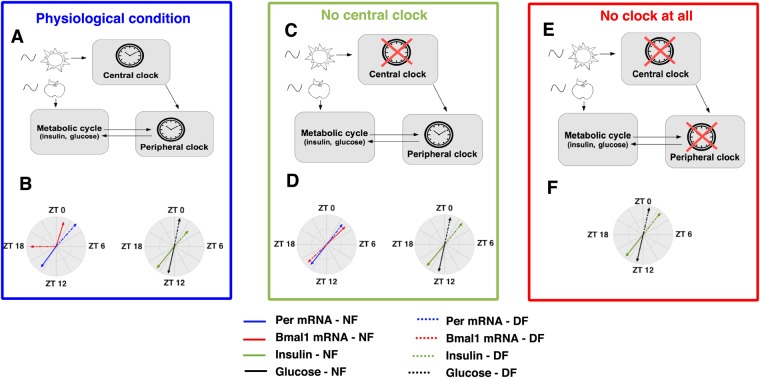Figure 7.
Effect of an inversion in the eating schedule for different architectures. The circular plot summarises the effect of a shift from nighttime feeding (NF) to daytime feeding (DF) on the phase (arrow direction) and on the amplitude (arrow length) of clock genes and metabolic variables in 3 conditions. (A,B) In the “Physiological” condition (where the local clock entrained by the central pacemaker controls the expression of exocytosis factors, panel A), there is differential phase shift in clock gene expression (compare dotted and solid red arrows) leading to hypoinsulinemia (reflected here by the reduced length of the dotted green arrow). (C,D) In the “No central clock” condition (where the local clock controls the expression of exocytosis factors, panel C), all genes shift by 12 h and the level of insulin is the same during nighttime and daytime feeding (panels D). (E,F) In the “No clock at all” condition (where the expression of exocytosis factors is not under the control of the clock, panel E), the levels of the metabolic variables are the same during nighttime and daytime feeding (panel F).

